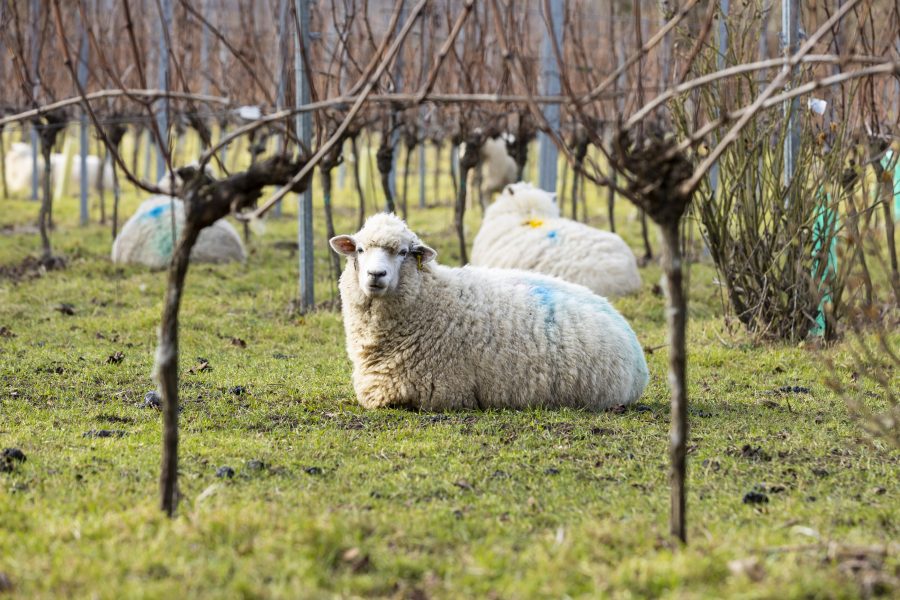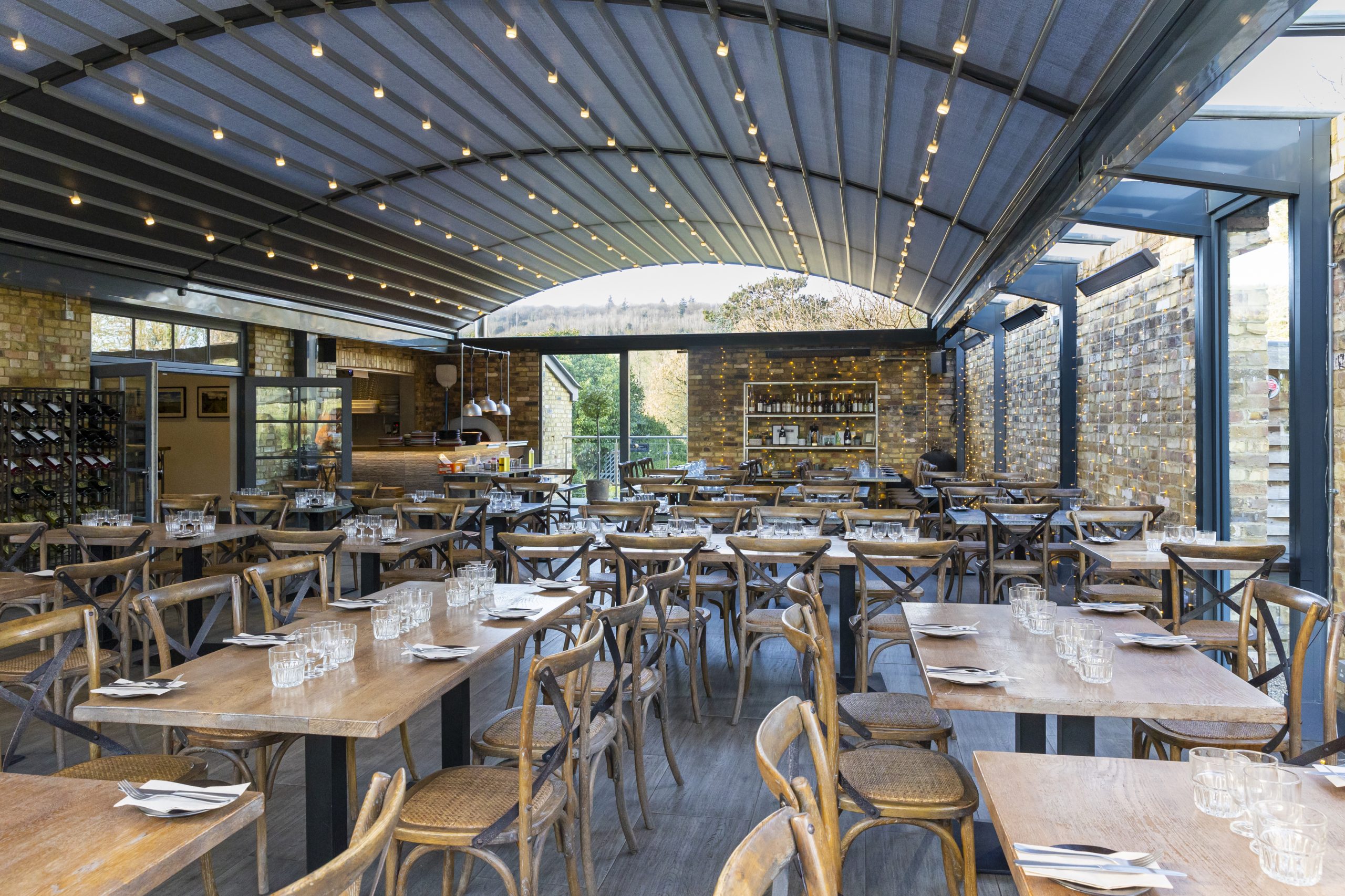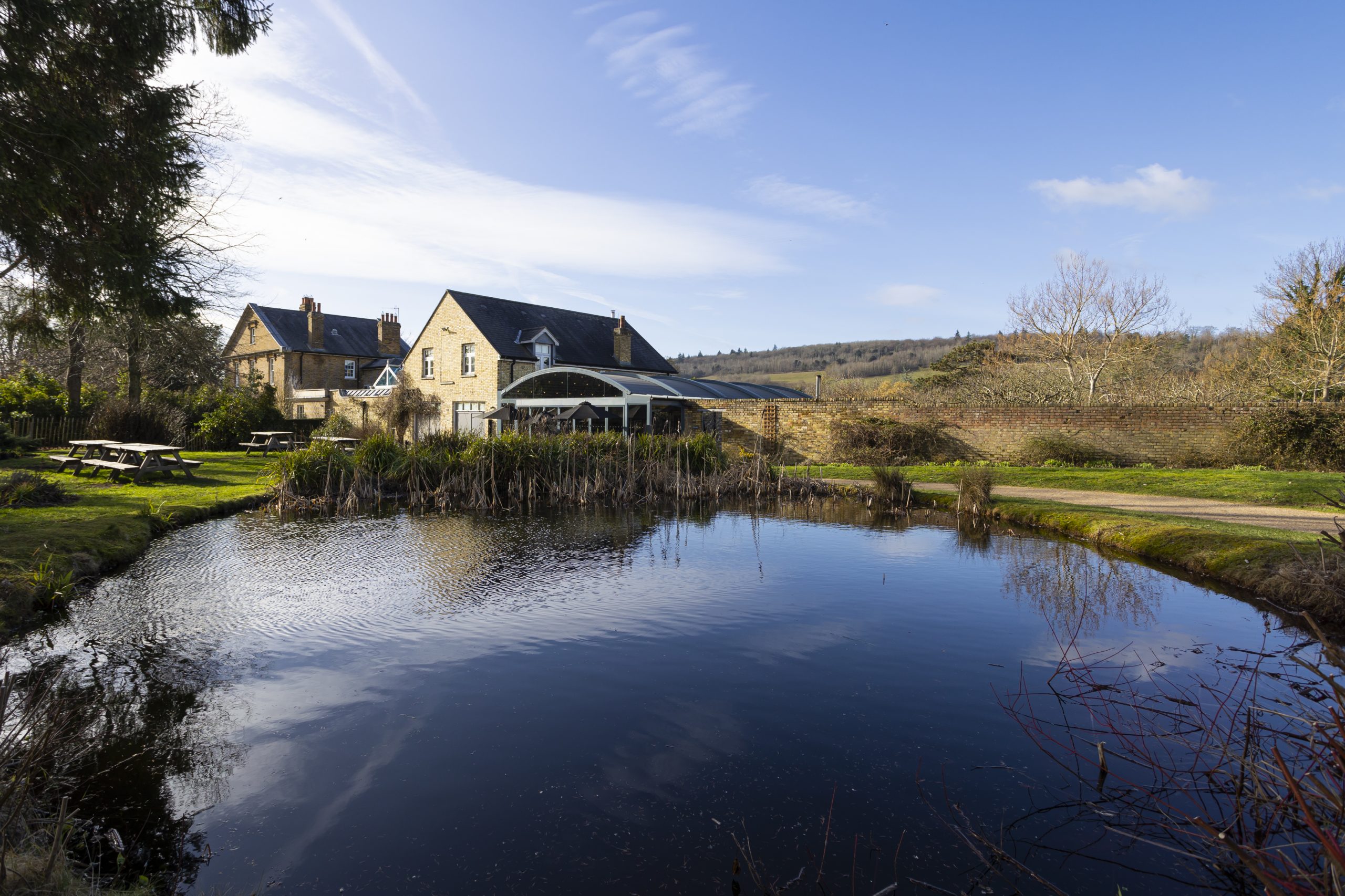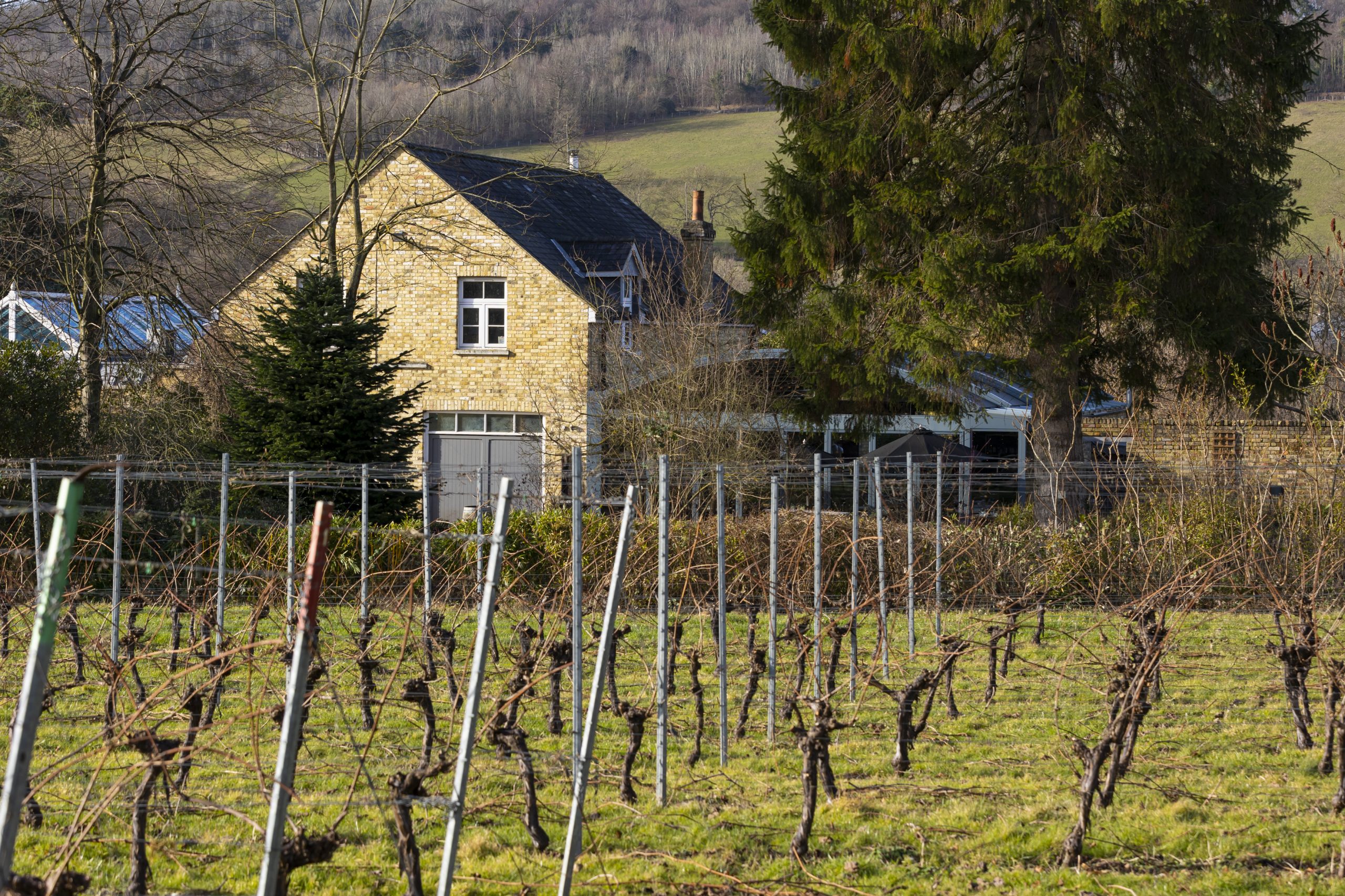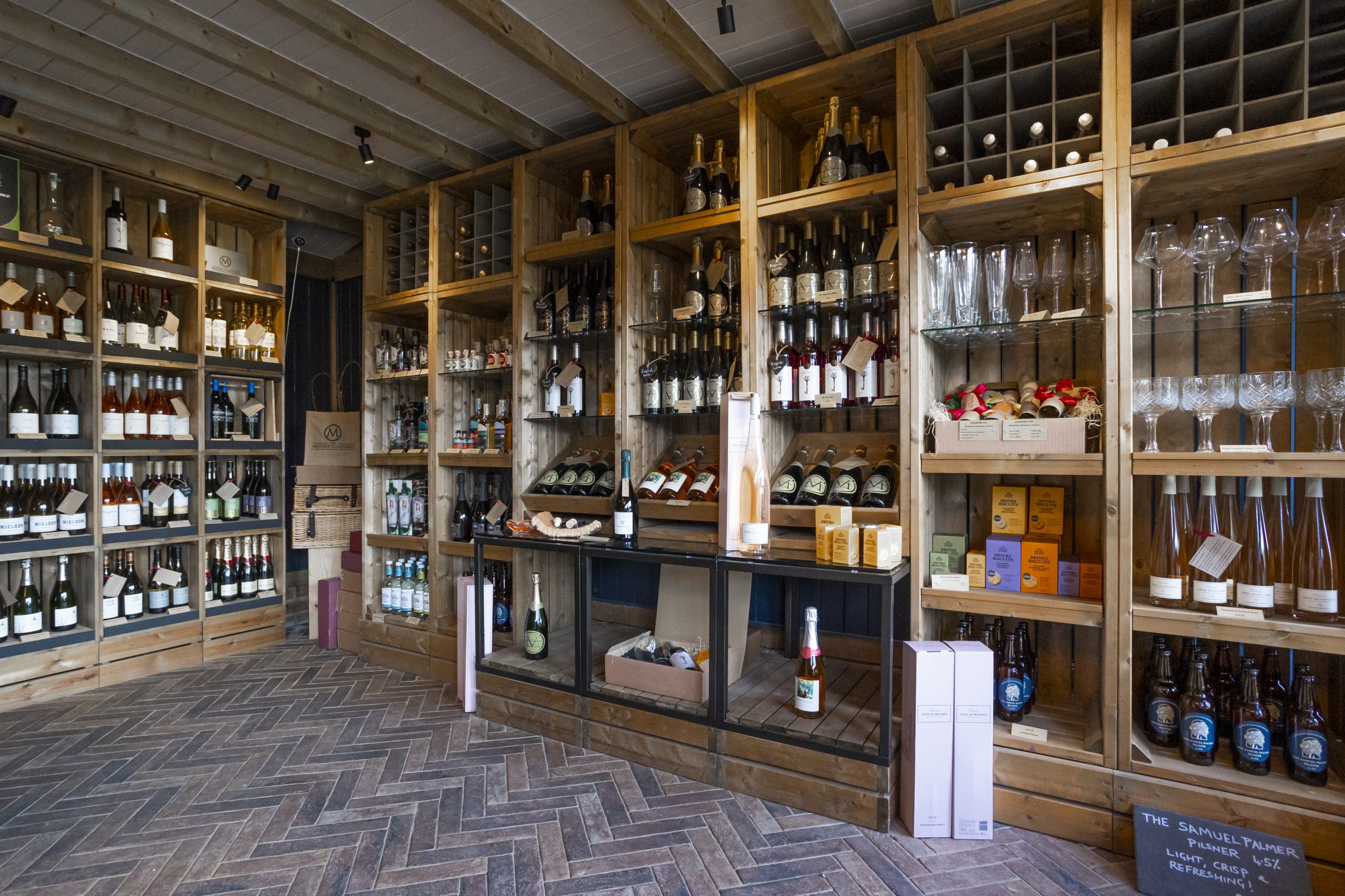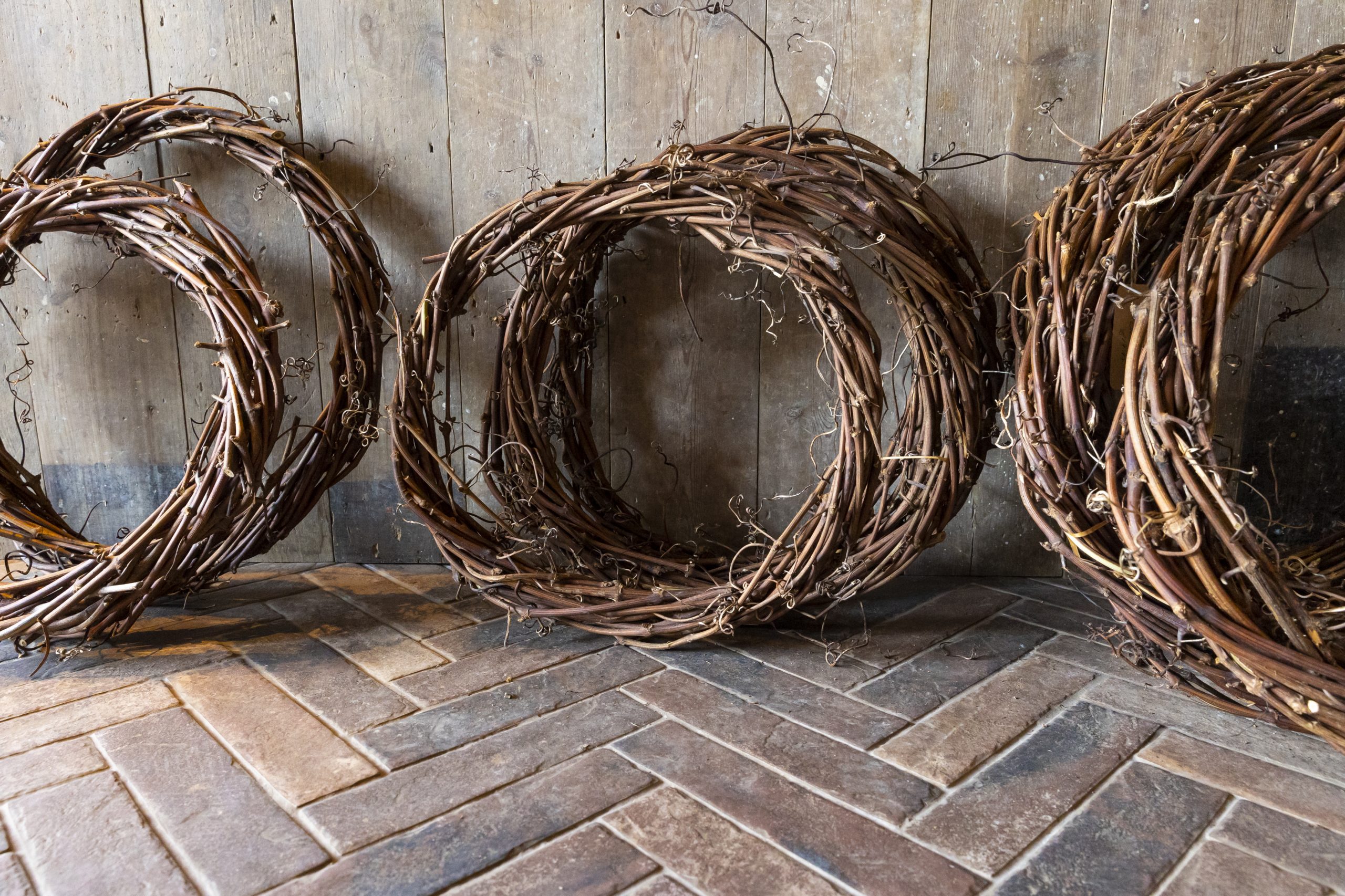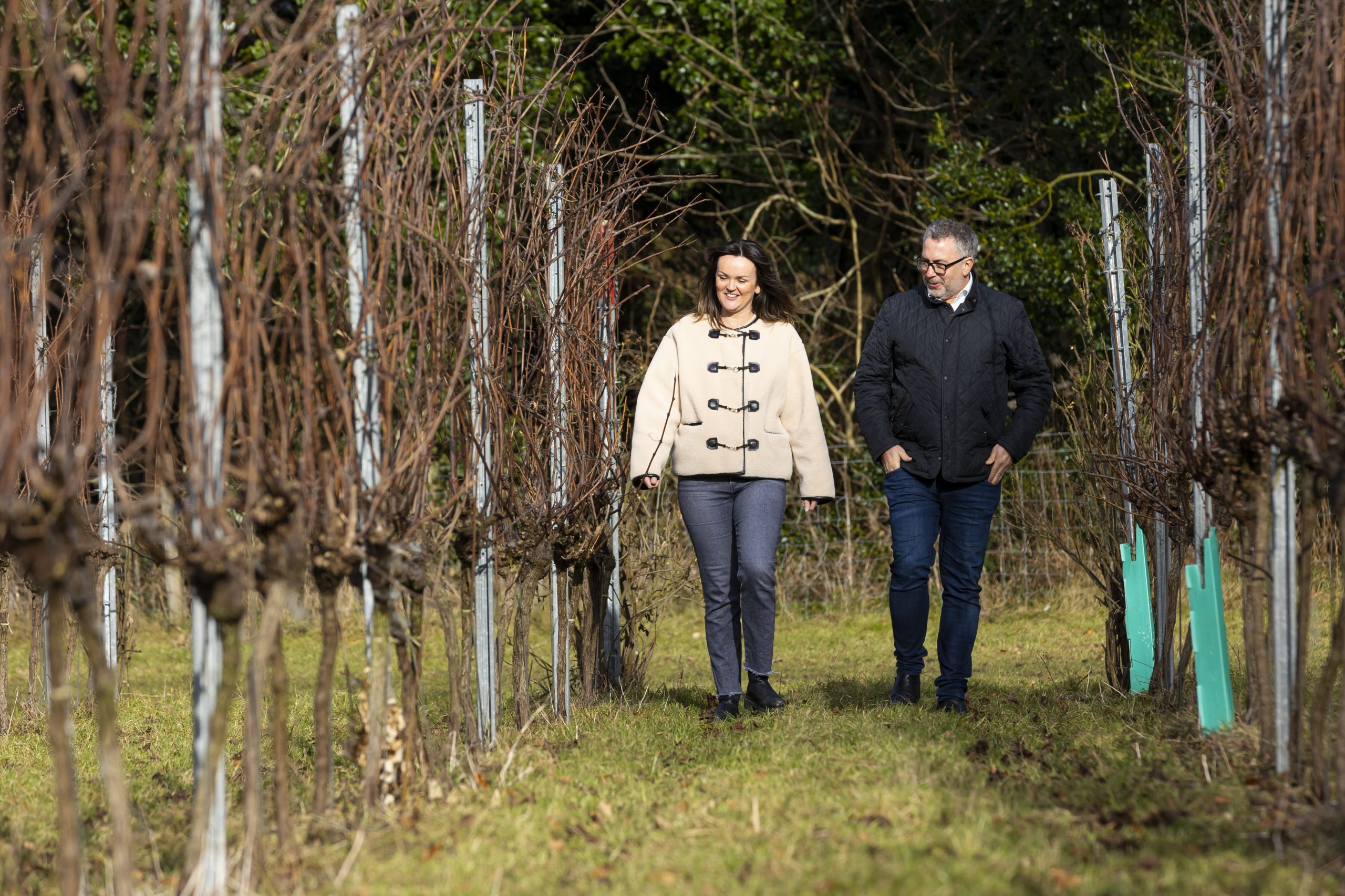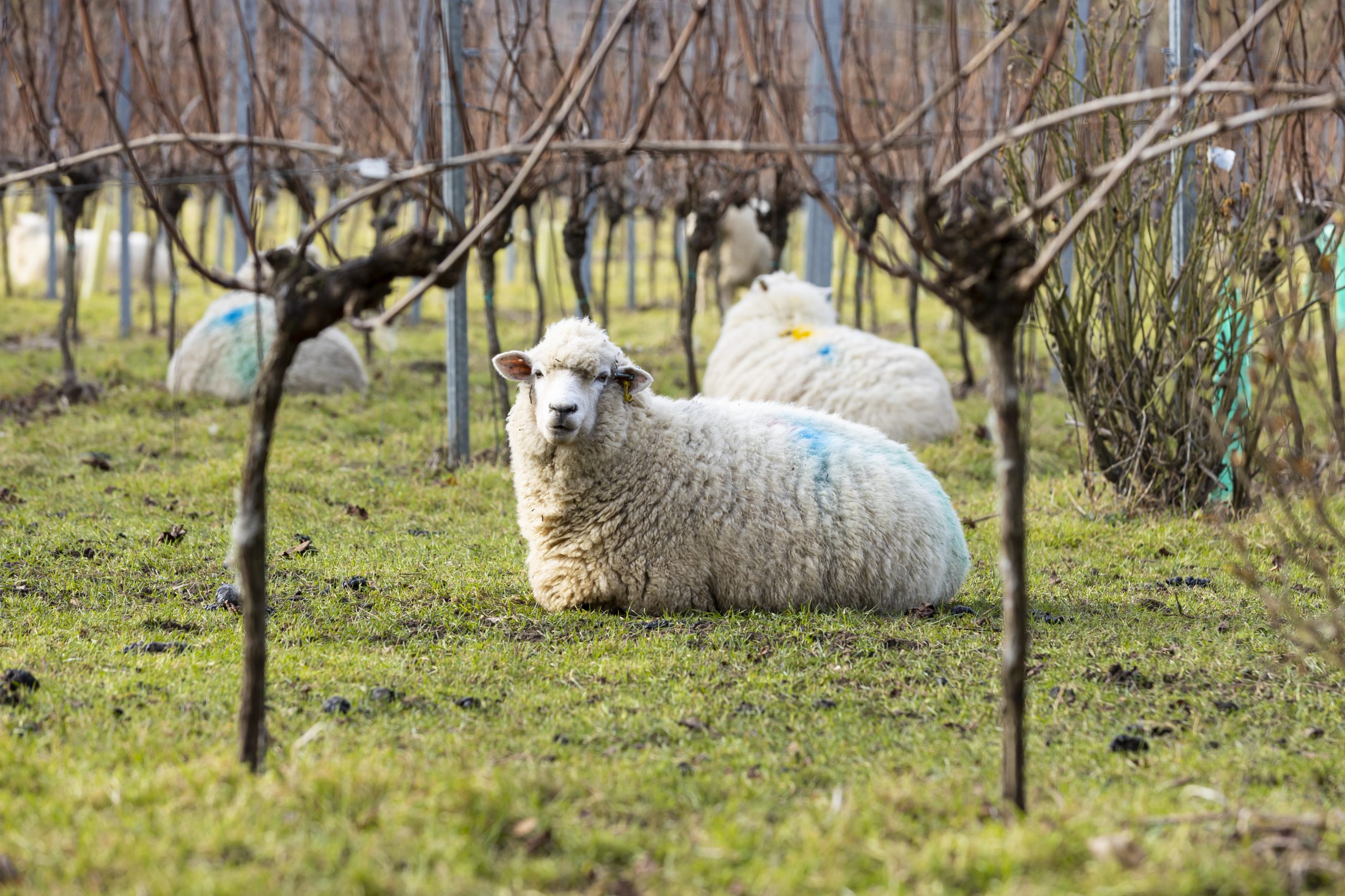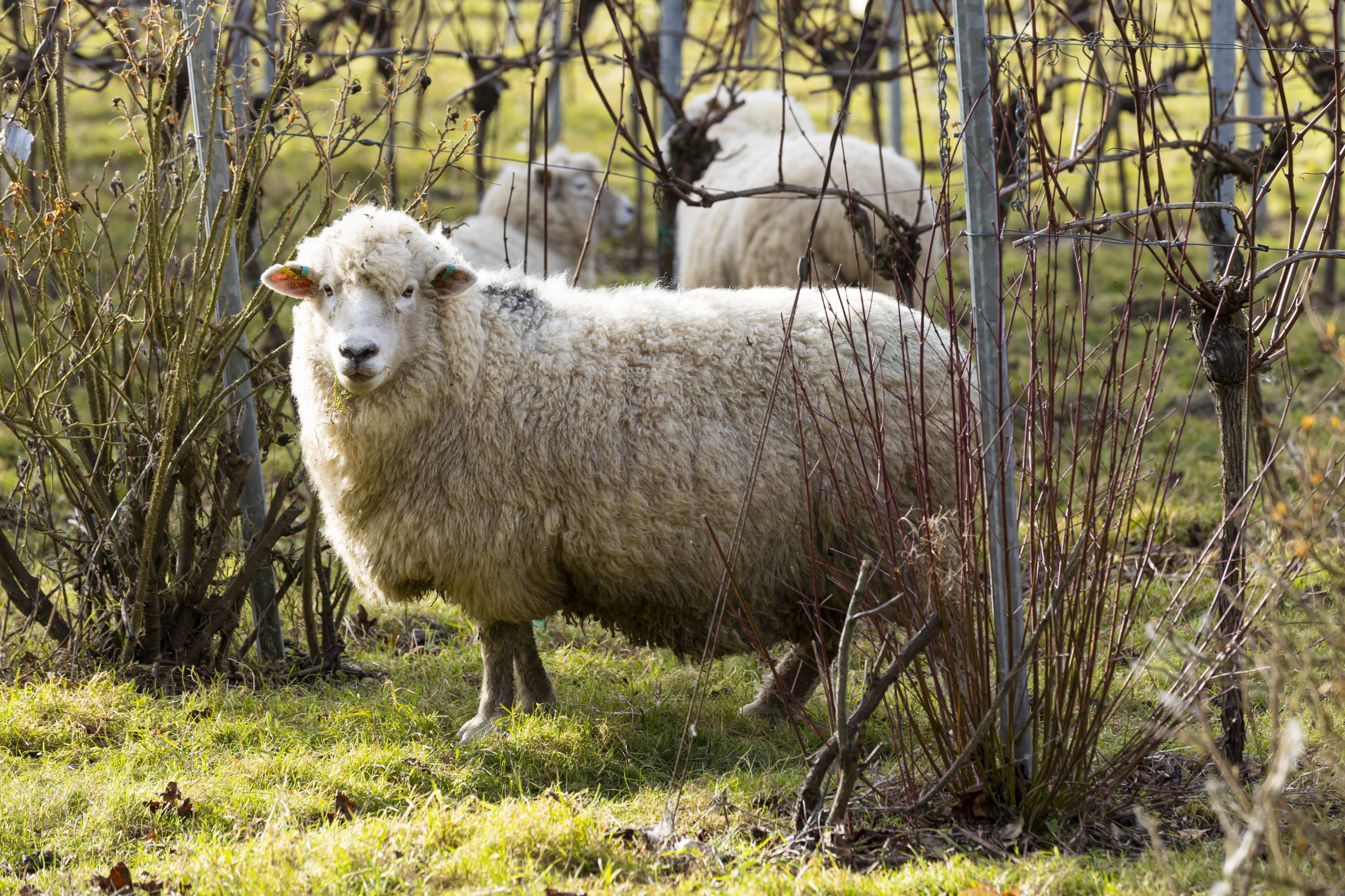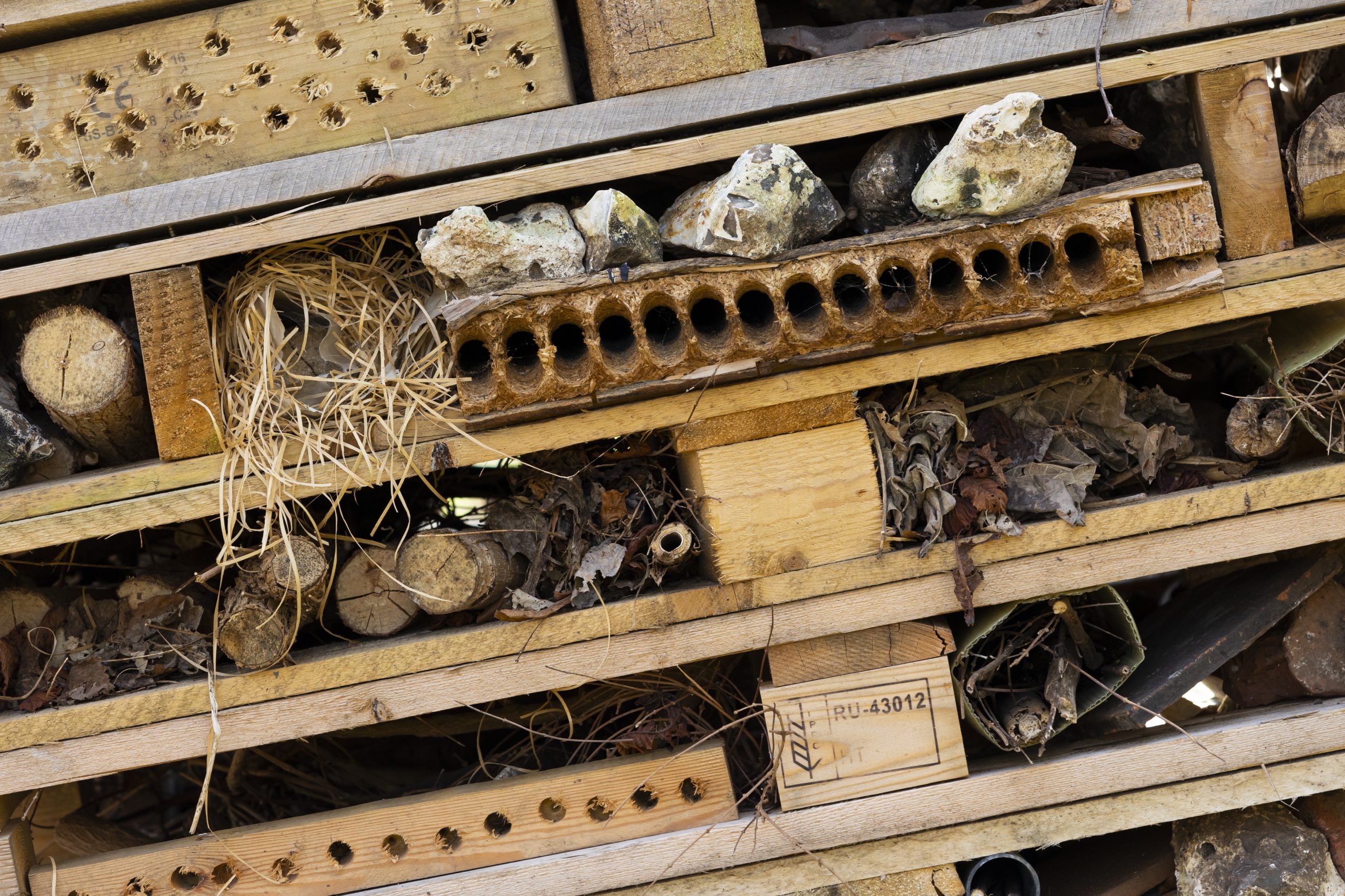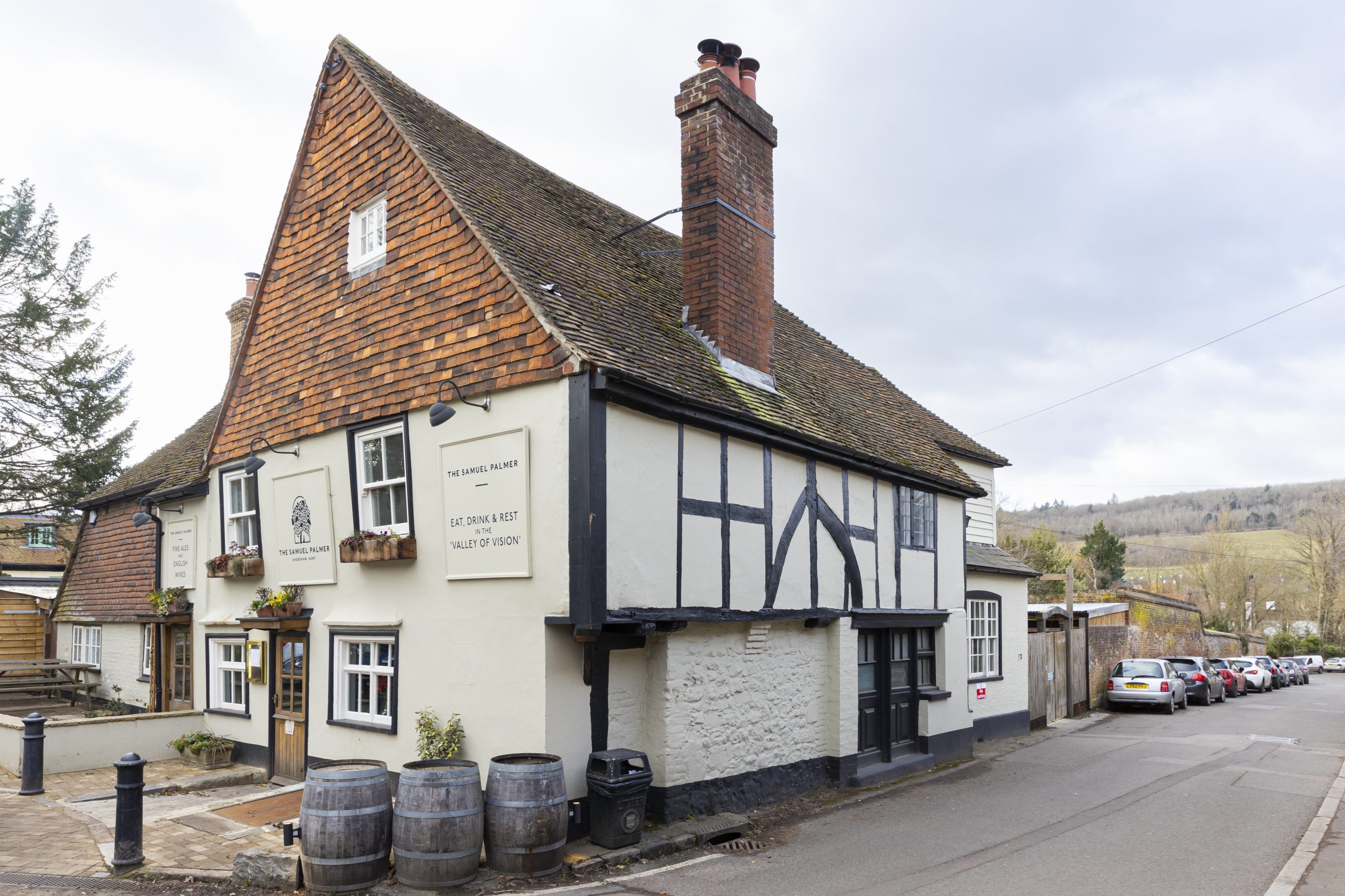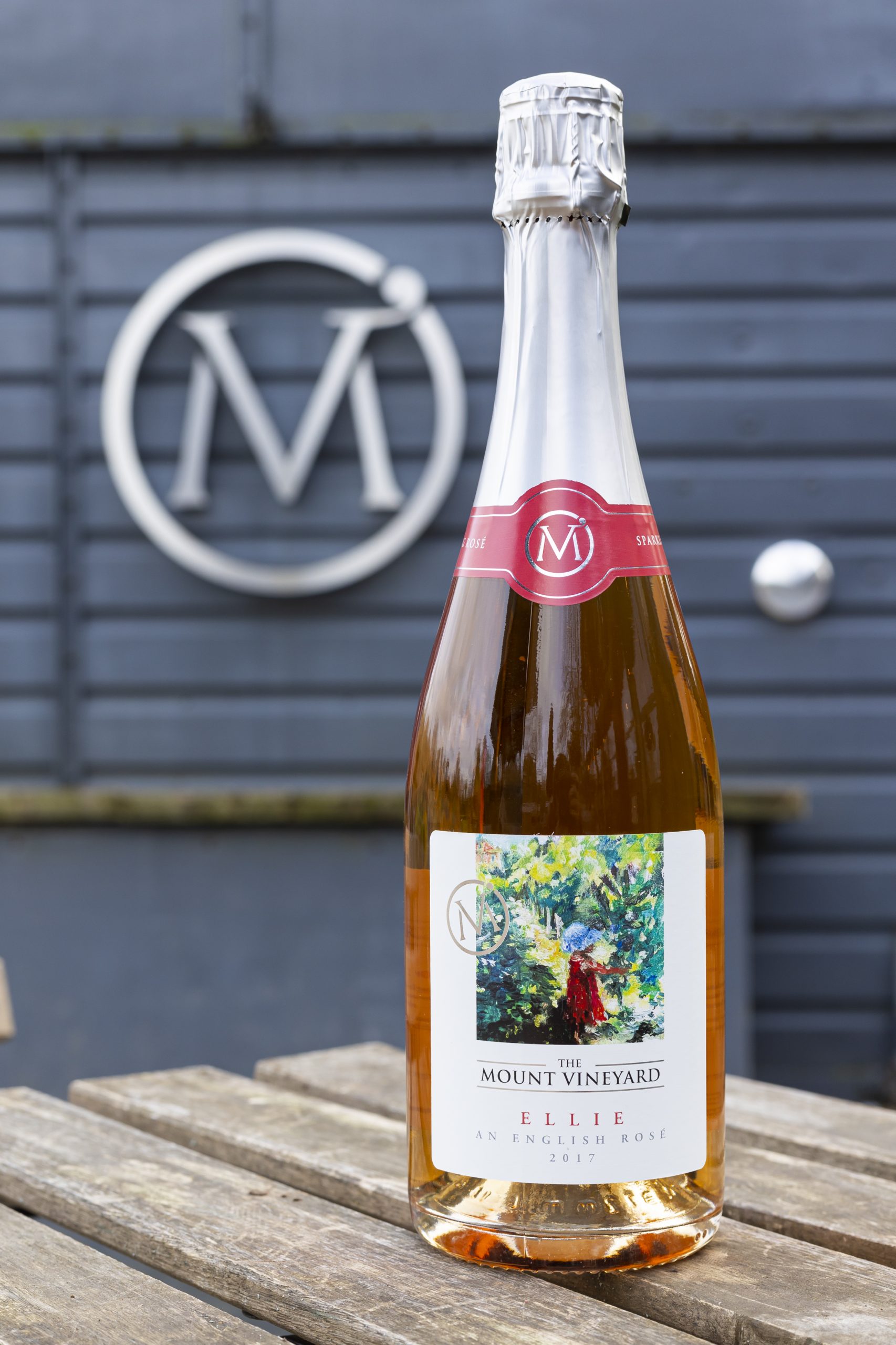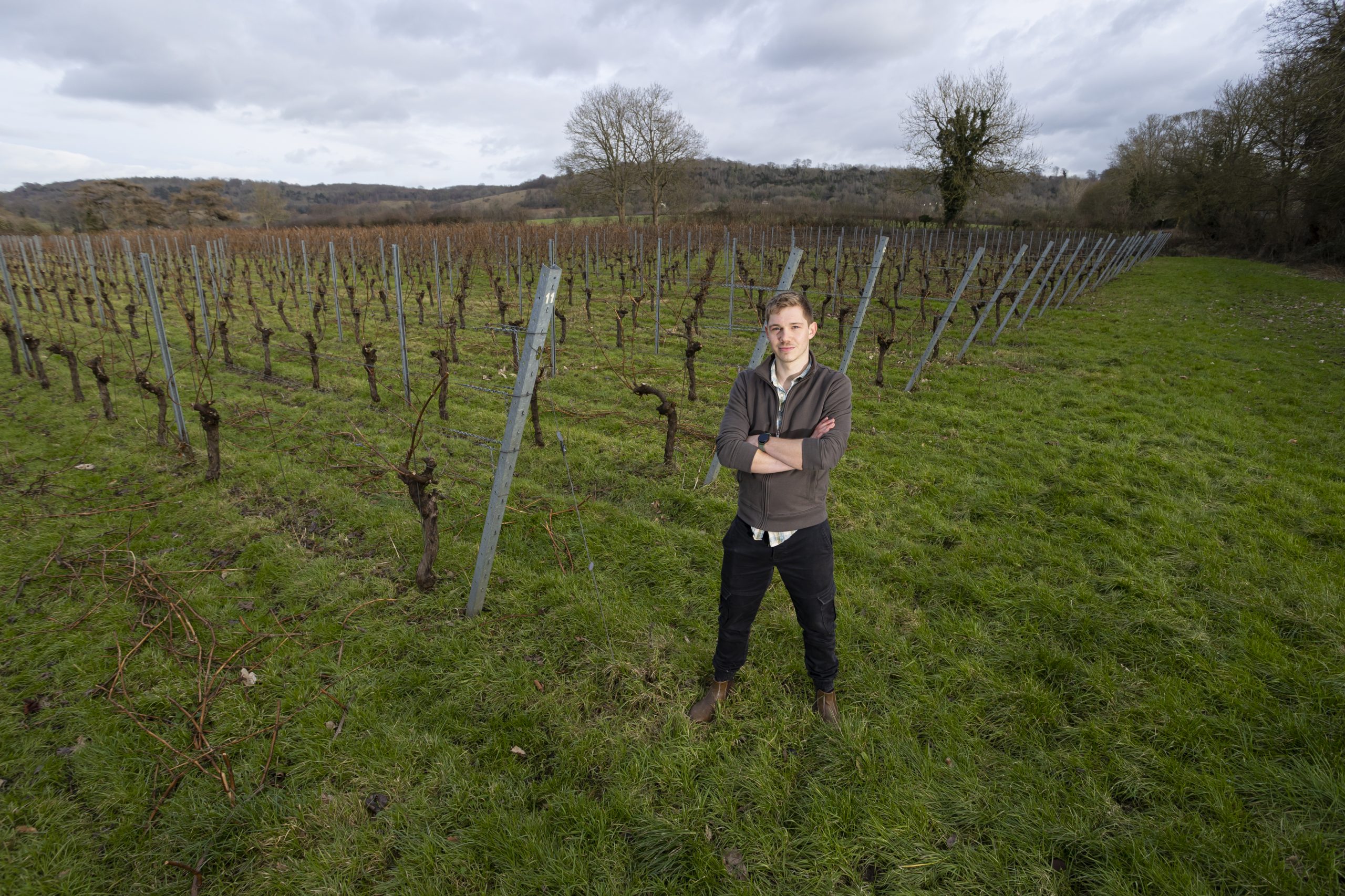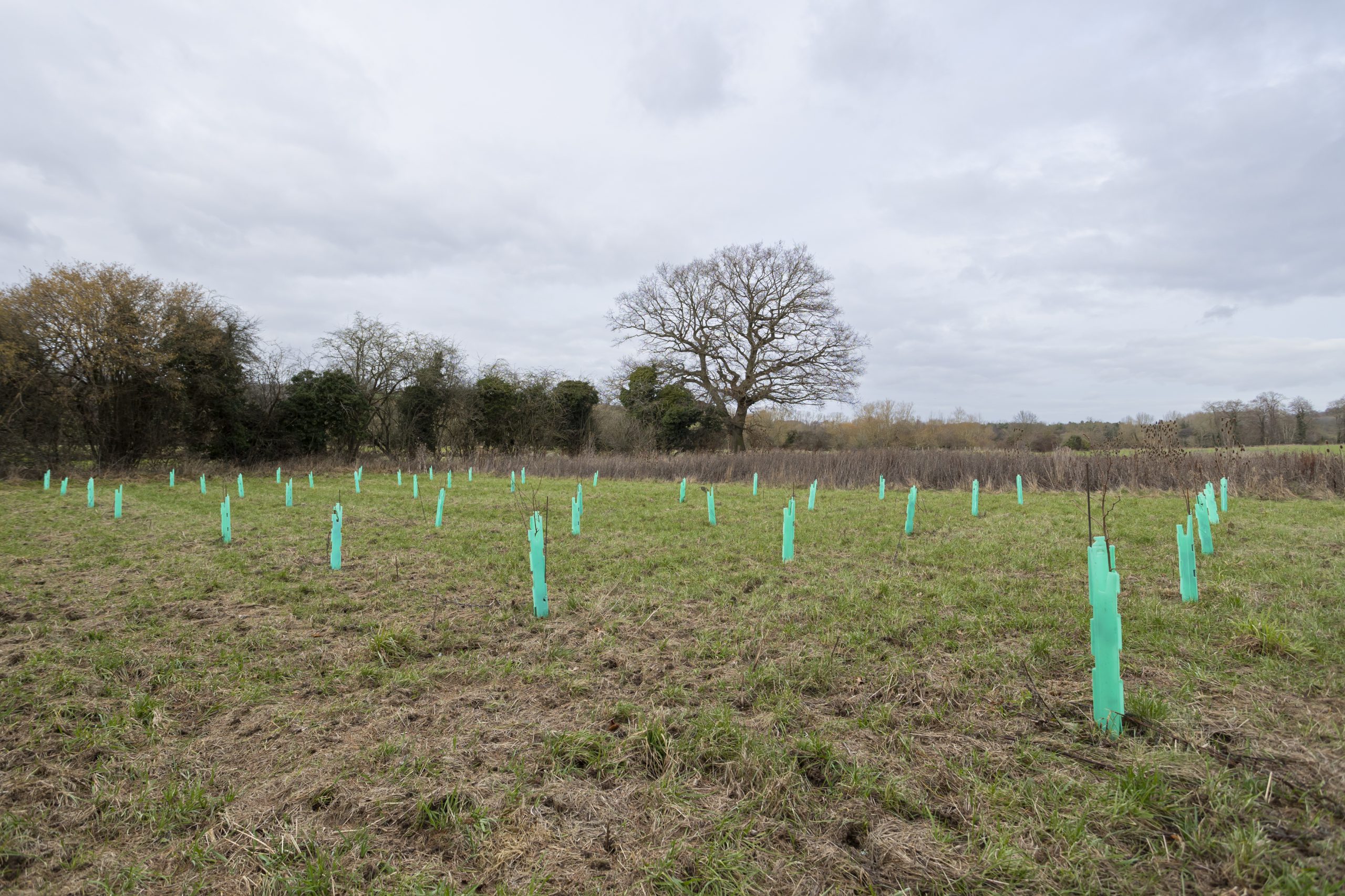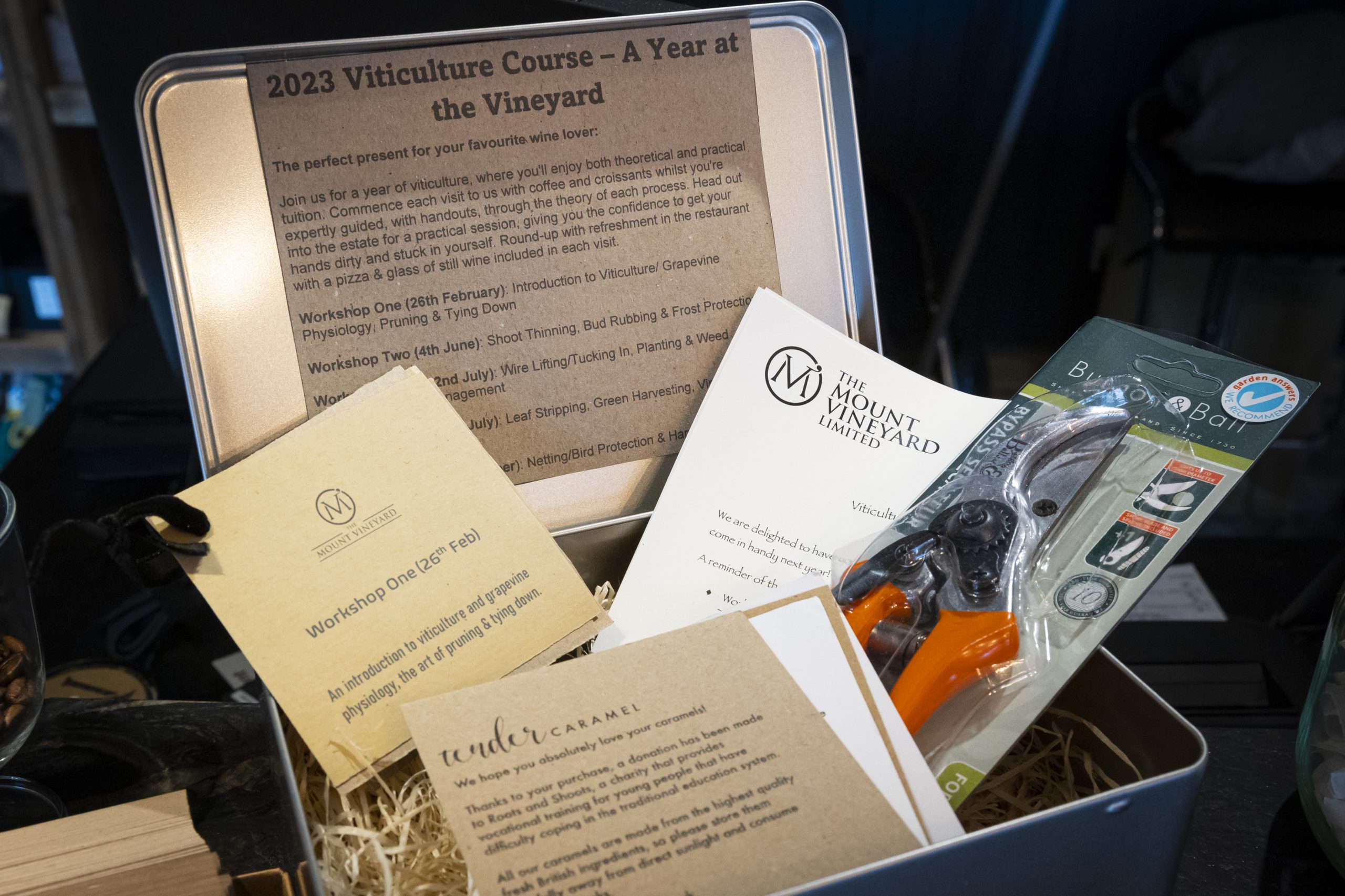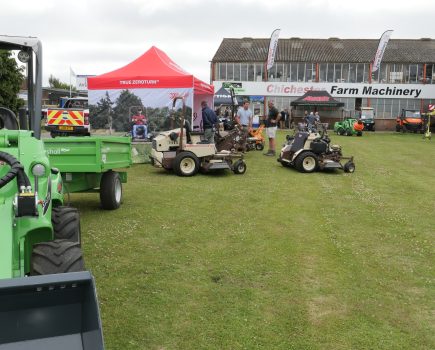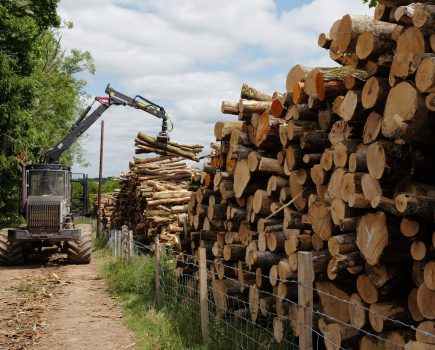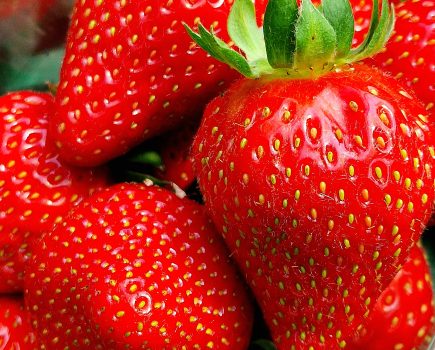This month we are pleased to bring you a special report on The Mount Vineyard from Shoreham in Kent – courtesy of our sister publication Vineyard Magazine. By Rebecca Farmer
Driving through the historic streets it is possible to see glimpses of the large white cross on the hillside above the village which serves as a memorial to the fallen in World War I and subsequently World War II. Like many coastal areas Shoreham Village suffered great hardship during World War II as German bombers would drop on these areas any remaining bombs they had left before returning across the sea to mainland Europe. Travelling through the peaceful village with a population of about 2,000 on a beautiful sunny day this tragic history seems a strange mixture of near and yet far away.
The Mount Vineyard is hidden from view by a beautiful brick entranceway. At first there is no sign of the 10 acres under vine – but the first parcel of vines soon becomes apparent. A lovely sight of sheep grazing in amongst the vines greeted us the day of our visit. Estate Manager Will Lewis later pointed out that the mixed flock includes the Romney breed. The sheep have been grazing the estate in winter for about three years and are one of many ways the estate has improved its green credentials.
Simon and Sarah Greenwood live in the main house on the site built by the owner of a local paper mill in 1869. Directly attached to the main house is a courtyard restaurant with a retractable roof. Feeling like a sophisticated and modern space it still manages to hold onto the charm of the past. With a little imagination on a day which had an outside temperature near to freezing it was possible to contemplate sitting there on a summers evening drinking wine made from grapes that surround the restaurant while savouring the aroma of delicious wood fired pizza. In the depths of winter, however, with the roof firmly in place the restaurant is cosy and warm and still has that lovely aroma of wood fired pizza.
Back in 2011 Simon, who still works in finance in the city, was looking to move out of London and into a rural community. Having grown up in Rutland, the smallest county in England, Simon once again wanted to enjoy the countryside. “I was addicted to looking at property websites,” he joked. Just 40 minutes train journey from Victoria Station, Mount Estate was planted with 2,500 vines between 2004 and 2006 and was put up for sale in 2011. Simon saw the opportunity he had been looking for and purchased the estate. Simon explained: “Very quickly I fell in love with the concept of growing and producing something.” Initially with little experience, Simon sought expert help in the form of VineWorks, which helped increase the planted area by a further two acres, adding Chardonnay to the selection of vines along with more Bacchus vines. There are now eight varieties planted with Pinot Noir, Rondo, Regent, Bacchus, Seyval Blanc, Phoenix, Siegerrebe and Chardonnay.
The estate totals 104 acres with four plots of vines planted at roughly 1,200 vines per acre totalling 10 acres under vines. “My first vintage was 2012 and I found myself becoming very aware of weather patterns,” explained Simon. Since this first vintage Simon has quickly gained a large degree of vineyard experience, but there have been other changes too. Simon met Sarah, who also works in the financial sector, and the couple now have two children. The couple got married at the vineyard in 2019 and the events team is able to offer other couples the opportunity to hold their special day at The Mount Vineyard.
Weddings are only a small part of the events held at the vineyard, with outdoor cinema and music events also taking place. Simon was keen to point out that the connection to the term ‘vineyard’ in the name The Mount Vineyard was very important and as such the vineyard offers a viticulture course that takes place on five separate days throughout the year. The course covers aspects of vineyard management and harvest including pruning. On the day of the visit Will Lewis pointed out a section of vines that had been left specifically unpruned for those on the course. Will said: “At first I was nervous about the prospect but it was a really positive experience.” The package is a popular gift but there are also those who wish to join the course with the prospect of adding to their skill set.
Sarah is very motivated by the idea of environmental sustainability and the business was recognised with a ‘Green Business Award’ at Sevenoaks Business Awards 2022. Apart from the sheep in the vineyard there are other not quite so obvious sustainable practices on the estate. The restaurant uses a biomass boiler and solar thermal panels have also been incorporated into the energy generation processes on the estate. One future plan is to install electric car charging points in the spacious car park adjoining the Ten Acres Shop which stocks all the various wines alongside other specialist items such as truffle oil and chocolate from local producers. The vineyard already benefits from excellent public transport links, with a train station just 13 minutes’ walk away. Where many vineyards struggle with car-free access, the Victorian expansion of the railways brought people to this part of Kent and today it is easy for people to arrive by train at the vineyard. “People dress up for the tastings and can often be seen walking from the train station,” said Sarah.
This link to the Victorian penchant for travel leads to a discussion about climate. Simon explained that the vineyard has its own valley microclimate and in the summer it is possible for the estate to be around 2°C warmer than the surrounding area so the Victorian visitor (and the modern visitor) would definitely have enjoyed their summer vacation spot. Conversely the vineyard is extremely prone to frost, suffering as many as 10 frost nights in just one season. “Bougies are effective but are very labour intensive,” explained Will. The vineyard also uses a Frost Buster supplied by
N P Seymour. “Between Plot One and Plot Three there is only a distance of 300 metres but the weather stations show the temperature can differ by 1°C,” said Will. The early Chardonnay can be particularly vulnerable, but where there has been frost damage the second shoots on the Seyval have proved more fruitful than the other varieties. Simon explained that there is a plan to install a sprinkler system across the entire vineyard. After some research it was decided that heated wires were unsuitable for the site owing to the high wind chill factor experienced in the vineyard and therefore the sprinkler system was the best option.
There is 10 inches of soil before you reach chalk and “a slightly alkaline ph of 7.0 to 7.5 can mean the vines struggle to access the manganese and magnesium they need but the soil is generally nitrogen rich,” said Will. Historically the vineyard has had significant disease pressure from downy and powdery mildew so inputs are purchased upfront for the whole season from Agrii, with John Buchan as the independent vineyard advisor. Will explained that while canopy management to relieve disease pressure is very important, in recent years it has been possible to tighten the spray windows so that applications are made at exactly the right time. The number of varieties that are present in the vineyard can make this complicated, though, as some plots have been planted with half a row of Bacchus and half a row of Pinot Noir. “The timings of applications for these varieties differ, with the Bacchus suffering disease pressure earlier,” explained Will. This slightly unorthodox vineyard layout also presents challenges at harvest. The estate has three full time employees who supervise the harvest, which is done by volunteers. Harvest figures vary but in a good year 25 tonnes of fruit are picked, usually across five days with 60 to 70 volunteers per day. Many of the volunteers return year on year to take part and each day finishes with pizza and wine in the courtyard restaurant. “We use the white chalk that football referees use to indicate where in the row the pickers should stop as the varieties change mid row,” Will said with a smile.
The estate has very little problem with pests although the red varieties are netted to prevent predation by birds, but there does not seem to be a major threat in the area. Simon pointed to the fact that there are a number of birds of prey in the area which provide enough protection for the grapes and only one of the four plots has ever suffered from deer damage.
The fruit is sent to Litmus Wines in Dorking and the 25,000 bottles produced are all used by the estate. One of the label designs for The Mount Vineyard features a large key in the design. Simon explained: “When I bought the house I found a box of keys; some of them were modern and some were intricate and old. Some of the locks were possibly part of old outbuildings that were no longer on the estate and some were keys to doors that are still part of the house. Keys denote all sorts of ideas and possibilities and I wanted to capture this in the label design.” Celebrating the birth of their first child Ellie, Simon and Sarah released a 2017 Rosé with a special label and other labels are now part of The Mount Vineyard offering. The estate produces a still Bacchus and a Pinot Blanc alongside traditional method sparkling. Recently both the Sparkling Red (2015) and Sparkling White (2016) were awarded silver medals at the ‘IEWA 2022’. The production of a sparkling red is a break from the norm and can be quite controversial, but Simon pointed out: “By the time it received the award the sparkling red was already sold out.”
Just a short walk from the vineyard sits a lovely local village pub. The pub, dating from the 15th century, was previously part of a large chain and had not seen much investment, so in 2020 Simon and Sarah decided to purchase the pub and after a refit covering a period of two years it reopened as The Samuel Palmer. “This is the name of a local landscape artist who was featured at the Royal Academy,” said Sarah. “The interior design of the pub has been influenced by his painting and the walls of the pub are adorned by pictures of the artist himself alongside his thoughtful depictions of the local scenery. “There is a walk that starts and ends in the village called ‘The Landscape of the Landscape Artist,’ added Simon. The pub has a lovely atmosphere and there is the possibility that in the future it could offer guest rooms but for now Sarah and Ellie really enjoy their trips to the Samuel Palmer.
Sarah, who grew up in Ireland, admitted that living on the estate is fantastic and that her dad, who is a horticulturist, always enjoys his visits and makes useful suggestions during his stay.
There are significant possibilities for the businesses to have unusual synergies. Starting small, all the wreaths used for decoration on the estate make use of the prunings from the vines, but other synergies present themselves. The orchard apples are used in the pub and restaurant menus. There is also a walnut grove, but although the grapes don’t tend to suffer from pests, protecting the walnuts from predators such as squirrels has proved a challenge, as anyone who has one of these beautiful but prone trees will tell you. There is also a recently planted hazelnut grove that has been pre-inoculated to provide truffles. “We will be able to produce and use the truffle oil in the restaurant and pub,” explained Simon.
This fascinating and unusual project will take seven years to mature but the ability to use locally sourced ingredients has become a part of the ethos at The Mount Vineyard and it will be interesting to see both this project and others develop. At The Mount Vineyard the artistry of wine dovetails with culinary creativity and, like the picture perfect backdrop, is constantly evolving whether depicted on canvas or captured and bottled. Each presents a past moment in time that can be enjoyed into the future.
- Simon and Sarah Greenwood
- Estate Manager Will Lewis

